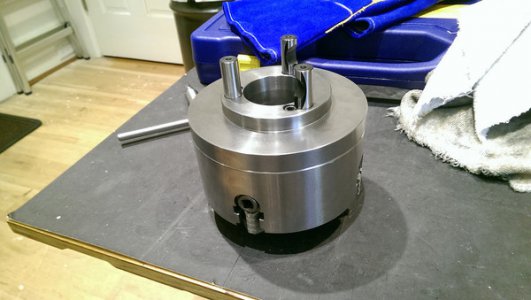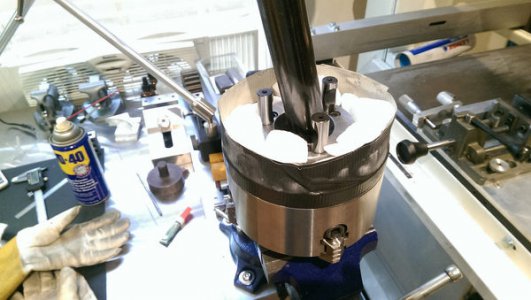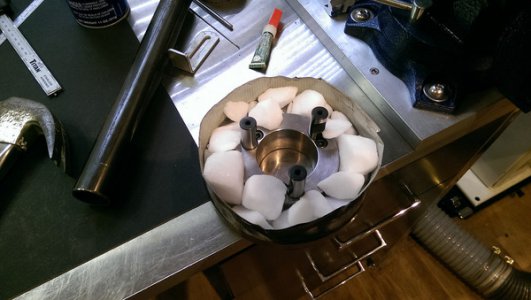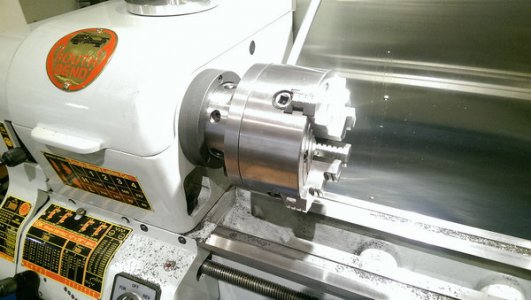- Joined
- May 16, 2016
- Messages
- 1,701
Had a good day today despite the appalling humidity.
Finished re building the franken burner after its previous demise from fire.
So it had to be used.
I have been revisiting the altitude slo-mo controls for the scope and had to mill a key way into the altitude shaft, this meant it also needed a new tabbed washer to fit.
No worries now the eroder is working. I placed all the electronics inside the welder case so there was only a three core cable running to the eroder head.
View attachment 143681
Fully submerged in a bath of kerosene and a metal tank this time, no plastic stuff.
A small aquarium pump delivers a jet of fluid to wash debris from under the electrode.
Here is the shape that is being burnt through the 0.9mm sheet of stainless.
View attachment 143682
and here is the electrode burning out of the kerosene bath. Quite a powerful arc.
View attachment 143683
A quick check half way through, approx 40 mins.
View attachment 143684
Almost through, 1 hour and 20 mins total so far.
View attachment 143685
Finished. Just under two hours to get this far. Now it just needs a tiny bit of cleaning to fit.
View attachment 143686
I milled a key way in a 12mm bolt so I could clean up the edge.
View attachment 143687
and it fit nicely and snug with no perceptible backlash but slips along the shaft without sticking.
View attachment 143688
Total time from start to finish allowing 20 mins cool down each time the coil reached 80'C was 4 hours 15 mins.
There Is obviously a story behind this Frankenburner, curiosity had got the better of me?





